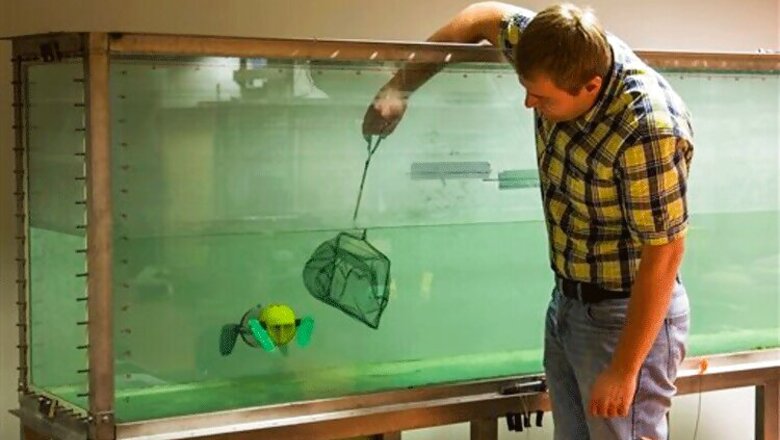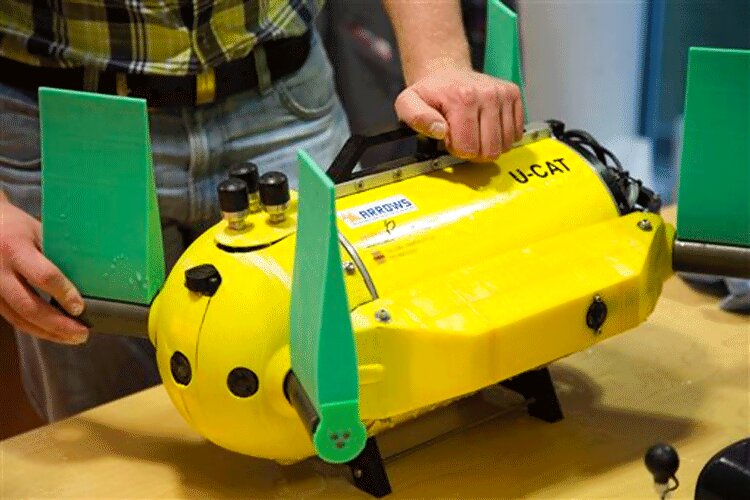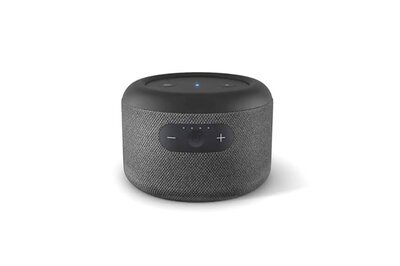
views
Tallinn: The Baltic seabed, littered with war debris and shipwrecks, has fascinated historians and researchers through the ages. But the underwater search robots they use pose problems by further disturbing the silty waters with their propeller movements.
Estonian engineers say they may have found a solution with their latest invention — a small, propeller-less underwater robot that causes minimum disturbance and lowers the risk of damage to submarine archaeology.
The unique feature of the U-CAT, about the size of a vacuum cleaner, is four silicon flippers inspired by streamlined sea turtles' arms and legs.
"They move in a slow and quiet motion and won't bring up sediment from the (sea) bottom," says Taavi Salumae, a designer at the Biorobotics Center of Tallinn University of Technology.
The underwater probe has been developed since 2012 in the EU-funded Arrows project that focuses on new technologies for marine research. It can stay submerged for four hours at a depth of 100 meters (330 feet) on a single battery charge of two hours. It's equipped with a camera and lights.
Most importantly, it can easily be rotated in tight spots that are too dangerous or difficult for human divers.
Salumae says the U-CAT, an acronym for Underwater Curious Archaeology Turtle (winner of a Facebook contest to name the robot), is one of the first robots designed to go inside shipwrecks and help underwater archaeologists study interiors of locations.

But its small size has a few drawbacks: It is limited to shallow waters, unlike large robots, some of which can reach depths of six kilometers (20,000 feet) without damage from water pressure. And it is not remotely controlled like traditional wired probes, which means there's also a risk of losing it during missions.
Last summer, it was successfully tested in the Baltic Sea and the Mediterranean by a group of European researchers.
Priit Latti, a marine archaeologist from the Estonian Maritime Museum, watched the probe dive to a flooded Soviet-era prison in July off the Estonian coast, and was impressed.
"The fact the robot uses flippers for movement is a huge advantage," he said. "It can move in every direction."
Latti says the museum is considering it for future undersea investigations, possibly to study the remains of a 17th-century vessel recently found in Estonian waters.
Bordered by Finland, Sweden, Russia, the Baltic nations, Poland, Germany and Denmark, the Baltic Sea is rich in historical wooden wrecks dating back to the 15th and 16th centuries, well-preserved because of the sea's low salinity and cool water that help keep marine shipworms away.
Divers regularly make discoveries, including an 18th-century shipwreck filled with drinkable vintage champagne near the Finnish Aland Islands, and a few months ago Finnish divers located a German submarine, the U-679, which sank in the Gulf of Finland in 1945.
"A diver can stay submerged and film only for a limited time," said Immi Wallin, head of the Finnish diver group which located the U-679. "This kind of robot can fit into very tight places and enter into a ship's cargo hold through a narrow door."
The U-CAT prototype isn't commercially available yet, but Salumae said the response has been positive.
He claims it's some "three to four times" cheaper than the "large and expensive" mostly propeller-powered robots, which are used by the military and the oil and gas industry and run into tens of thousands of dollars.
"Our goal was to develop this robot at a relatively low cost," Salumae said. "We don't use very complex sensors."


















Comments
0 comment